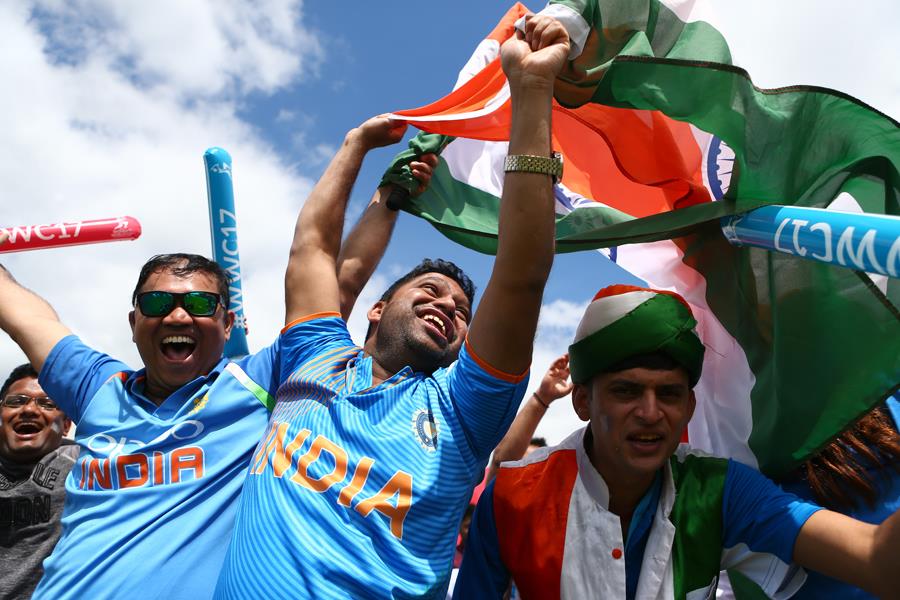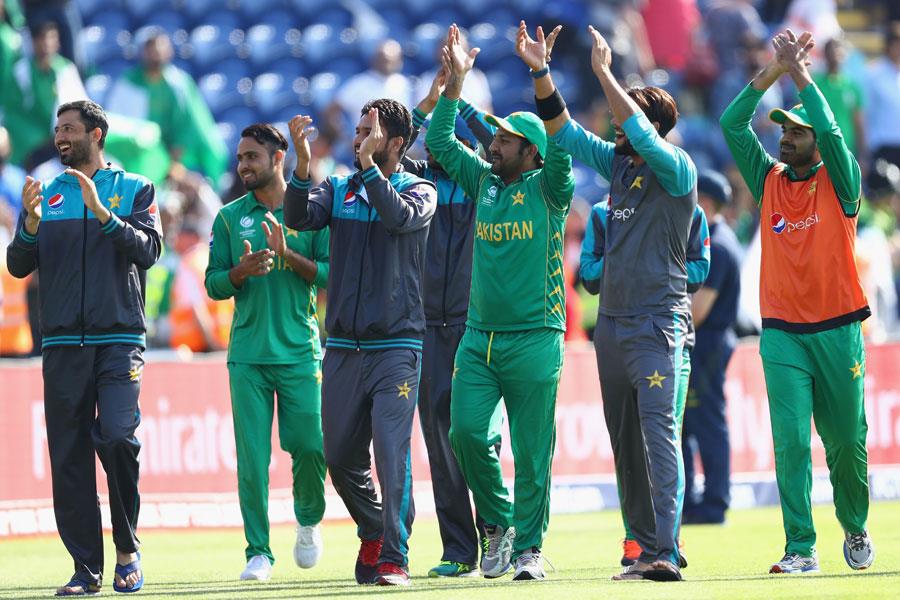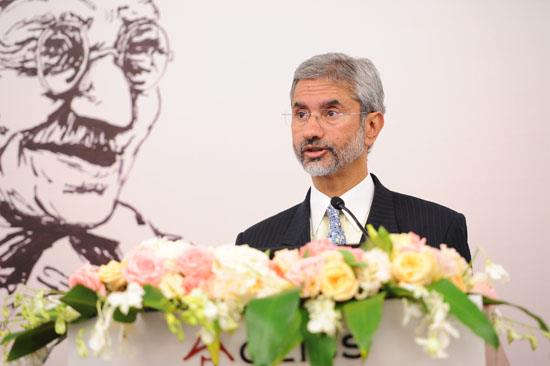July 2, 2017
Brief Scorecard: India women 169 for 9 (Raut 47, Sandhu 4-26) beat Pakistan women 74 (Nahida 23, Bisht 5-18) by 95 runs

Indian fans rejoice after India defeat Pakistan, India v Pakistan, Women's World Cup 2017, Derby, July 2, 2017 – ICC
July 2, 2017
Brief Scorecard: India women 169 for 9 (Raut 47, Sandhu 4-26) beat Pakistan women 74 (Nahida 23, Bisht 5-18) by 95 runs

Indian fans rejoice after India defeat Pakistan, India v Pakistan, Women's World Cup 2017, Derby, July 2, 2017 – ICC
The sun was out in its full glory on Sunday (July 2), and fans from all around the United Kingdom walked through the turnstiles at the County Ground to watch India take on Pakistan in the 2017 Women’s World Cup. The Indian and Pakistani fans, segregated into separate halves, enthralled with their chants, creating electric tension.
They had all come to watch established names like Smriti Mandhana, Mithali Raj, Jhulan Goswami, Harmanpreet Kaur and Sana Mir in action, but ended up witnessing the birth of three new stars. Diana Baig was outstanding with the new ball and on the field, and Nashra Sandhu produced a high-quality display of left-arm spin to return figures of 4 for 26 for Pakistan. But it was Sushma Verma’s career-best effort of 35-ball 33 from No. 7 in the company of the tail-enders that set up India’s 95-run win in a low-scoring game.
With India badly placed at 107 for 5 in 34.3 overs, Verma found enough support from Jhulan Goswami and Mansi Joshi to take her team to 169 for 9. Having never successfully chased more than 135 in World Cups, Pakistan had little answer against Ekta Bisht. The left-arm spinner returned 5 for 18 and surpassed Gouher Sultana to be India’s fifth-highest wicket-taker with 68 scalps, as Pakistan were dismissed for 74 in 38.1 overs. It was Bisht's second five-wicket haul against Pakistan in as many games, and the best returns by an Indian in World Cups.
India knew they had little chance to slip up on the field, and Goswami and Bisht provided them with the ideal start with four leg before wicket dismissals in the first eight overs. Bisht was particularly dangerous, as Ayesha Zafar, Sidra Nawaz and Iram Javed played for the turn, only for the ball to hold its line and hit the pad. From the other end, Goswami got one to come back in and trap Javeria Khan in front.
Deepti Sharma and Joshi, playing this game instead of Shikha Pandey, then joined the party as Pakistan were reduced to 26 for 6 in 15 overs. They had played out a total of 76 dot balls by then, and had no chance of staging a recovery.
Kaur had Nahida Khan caught behind to give Verma her first action behind the stumps in the 24th over. It was in front of the stumps, though, that Verma made her biggest impact. Having made 13 runs in eight innings till this match, very little was expected of Verma when she took guard in the 35th over. It was her first real test on the big stage, and she passed it with flying colours even though Mona Meshram – her first partner of the day – failed to rotate the strike before being bowled for six off 35 balls.
Critics had felt Goswami, the more experienced among the lower-order batters, should have come ahead of Verma. It was the veteran's calming influence that really got Verma going. Aware that there are plenty of overs left and anything above 150 could be a challenging total, the two focussed on rotating the strike. As they started using their feet, run-making looked easy as India kept passing targets in blocks of ten runs.
After Goswami was bowled going for the slog, Verma brought out her cheeky side, which included a six just over the mid-wicket fence. Baig, who saved at least 15 runs on the field, almost pulled the ball back into the field of play, narrowly failing to do so. She got second time lucky when she took a good catch running in in the same area to send Verma back in the 48th overIndia scored 55 runs in the last ten overs, and the effort stood out against how they had started the day. Once Baig, playing this game in place of Kainat Imtiaz, beat Mandhana for pace and trapped her in front in the fourth over, Poonam Raut and Deepti failed to find the gaps. India played a total of 52 dot balls in the first Power Play, crawling to 17 for 1. It included three consecutive maiden overs off Baig.
Raut tried to accelerate in the second phase of play and that improved India’s run-rate, but Sana Mir, Pakistan’s captain, was always a step ahead with her field settings and bowling changes. She made a total of 15 bowling changes through the innings, bringing in seamers every time a wicket fell, and constantly creating pressure through the spin trio of herself, Sandhu and Saida Yousuf.
With India unable to penetrate the in-field, it was a matter of time before something gave. Raut, after making a laborious 47, was caught and bowled by Sandhu while playing against the turn. Raj too played against the turn and was eventually ruled lbw after Mir reviewed it. Two balls later, Deepti was caught behind and yet again give out on review, as Sandhu got the Pakistan section in the crowd excited.
When Mir dived full length to her left at mid-wicket to catch Kaur in the 35th over to give Yousuf, another left-arm spinner, her first of two wickets, it looked like Pakistan were set for their first-ever win over India in ten ODIs. It was not to be as first Verma, and then the bowlers led by Bisht, took India a step closer to a semifinal berth with their third consecutive win in front of 2649 people.
Courtesy/Source: Wisden India
















































































































